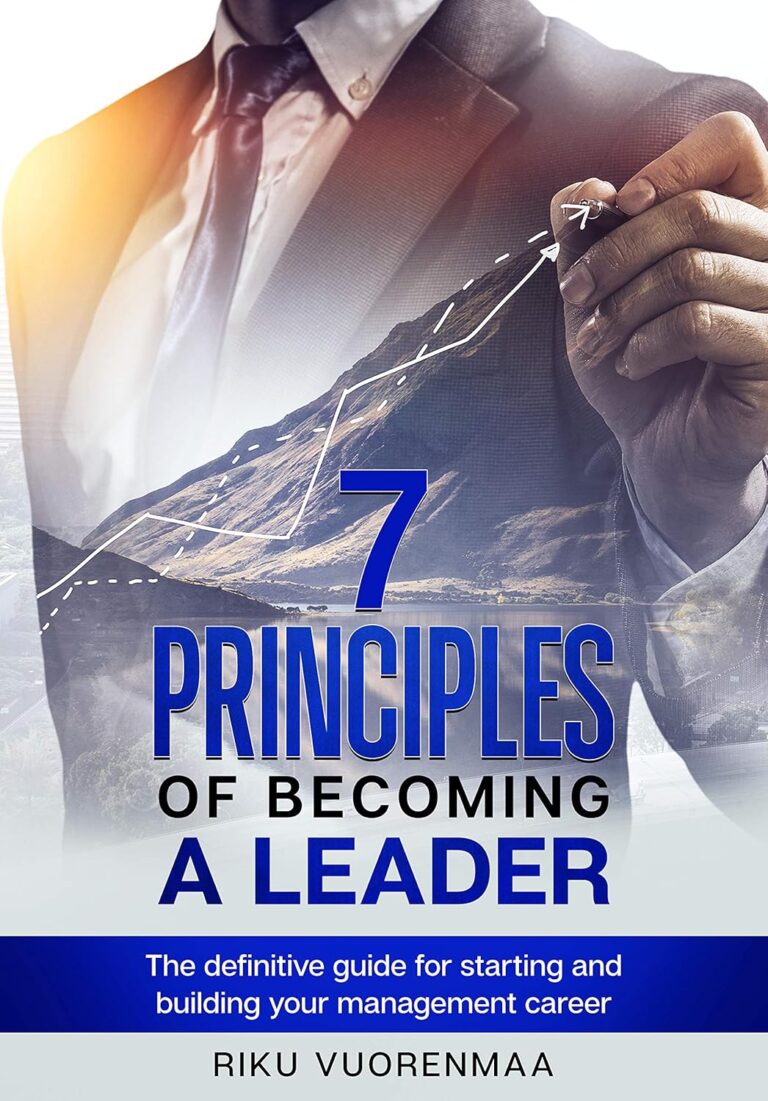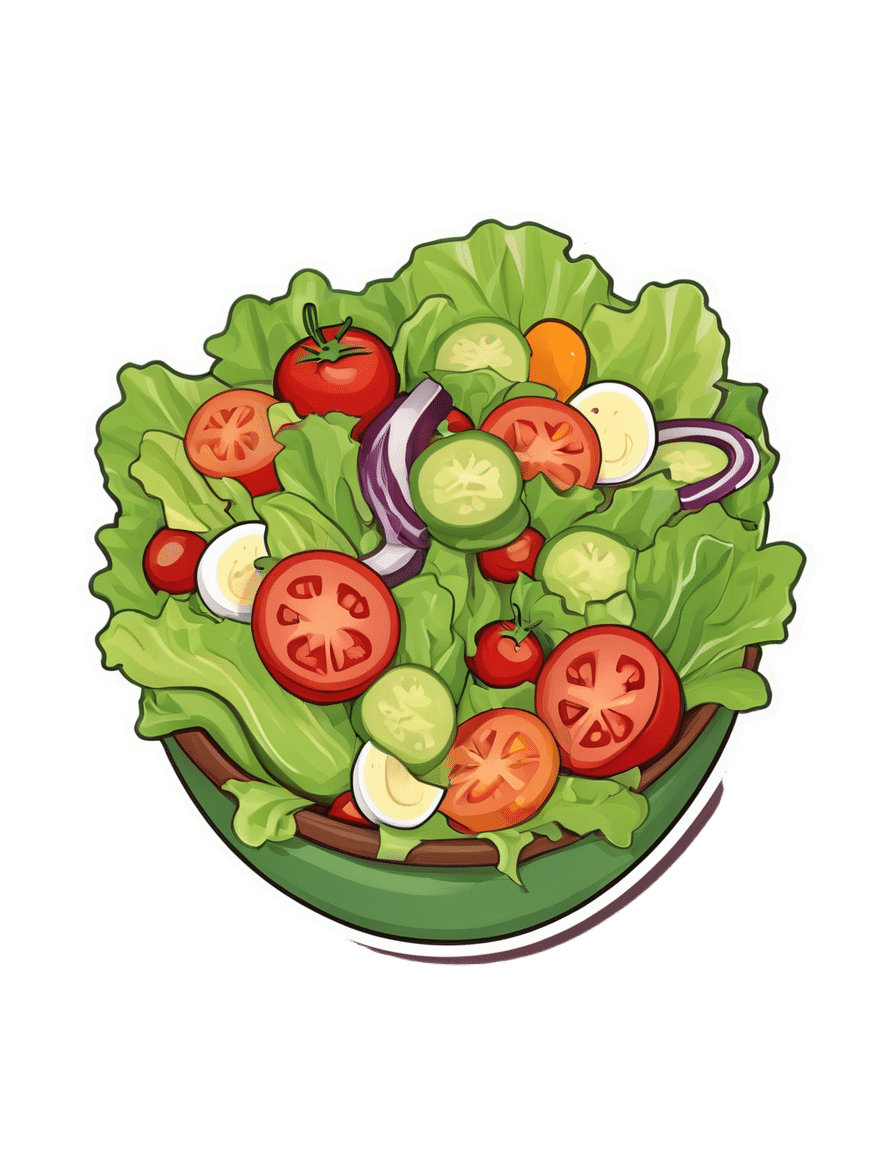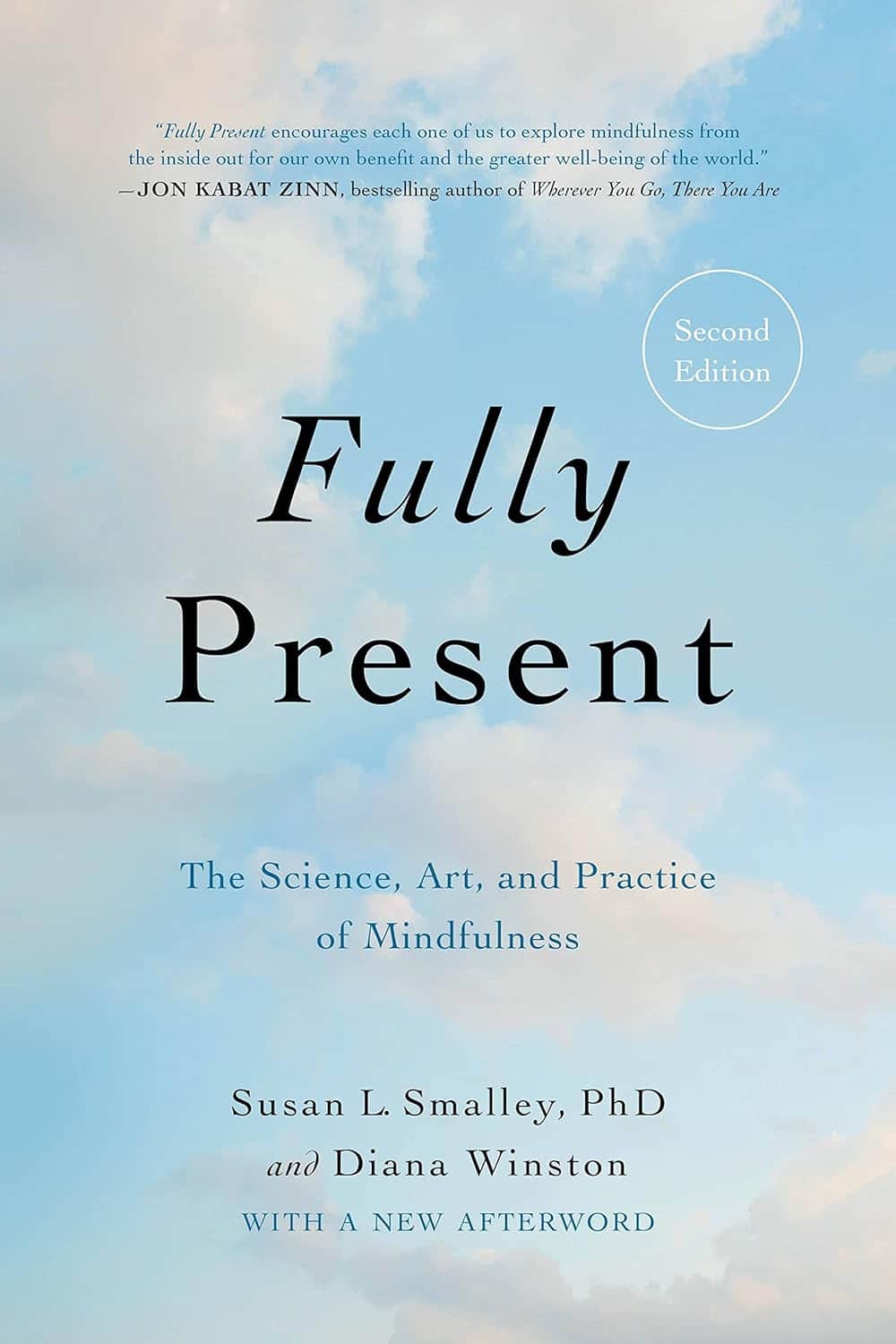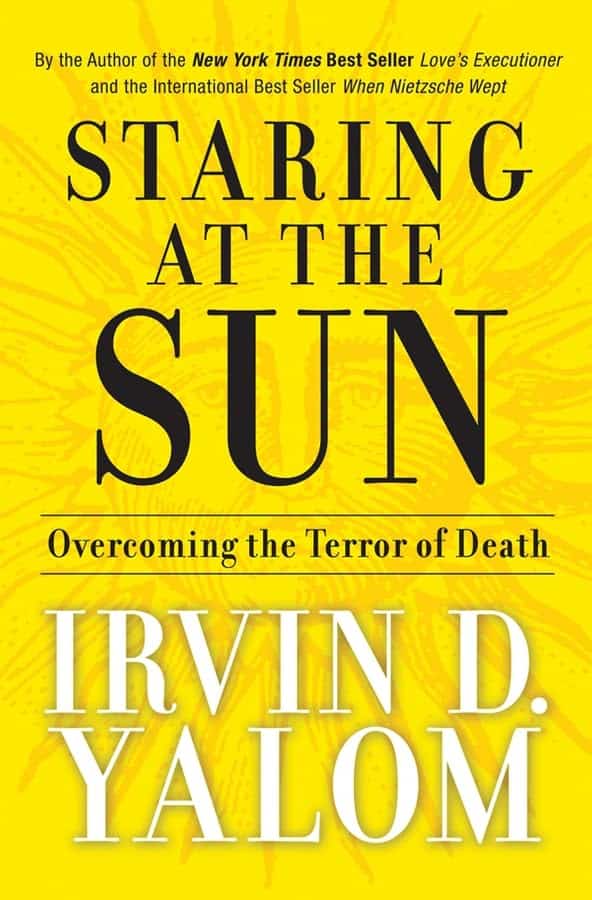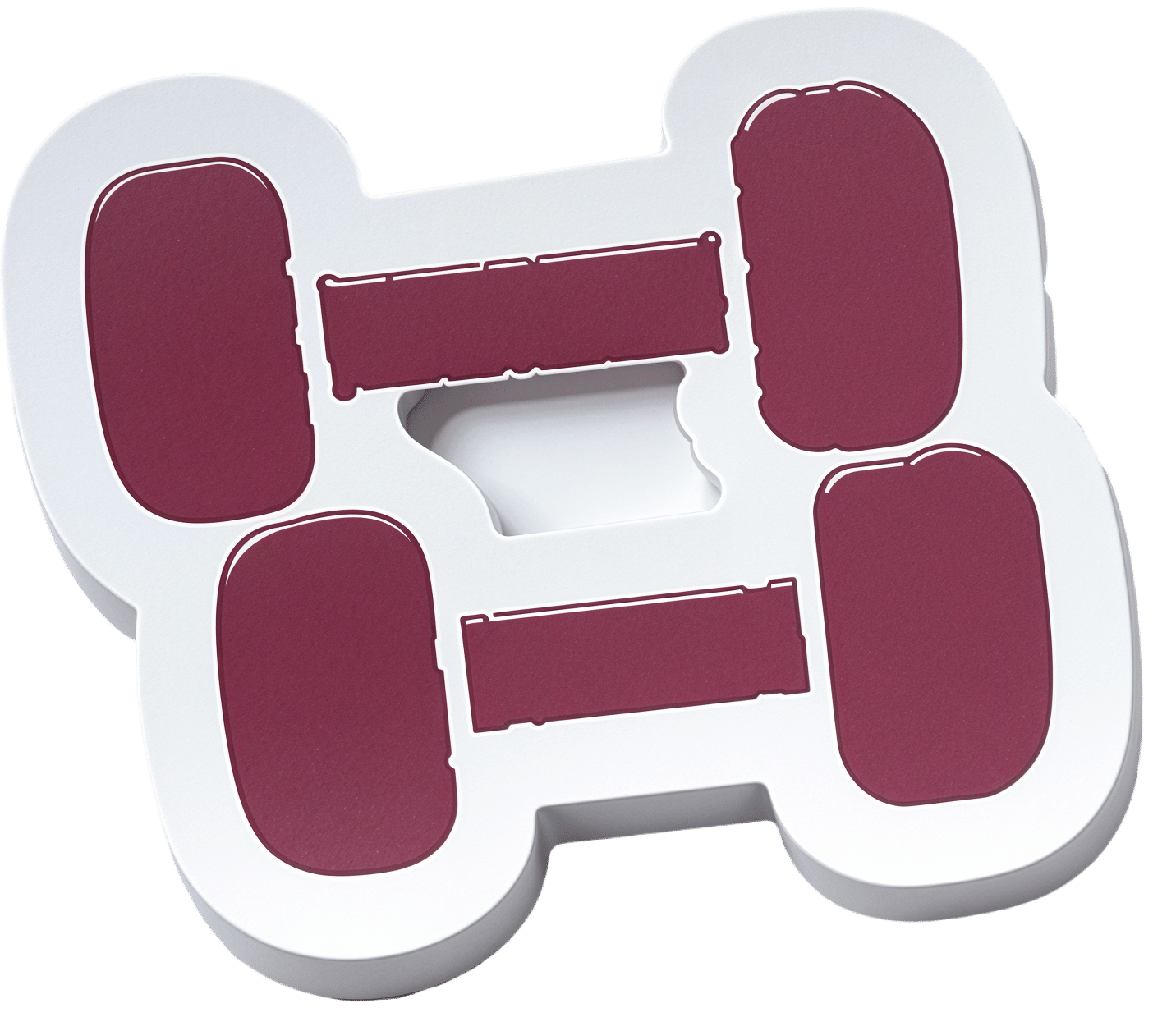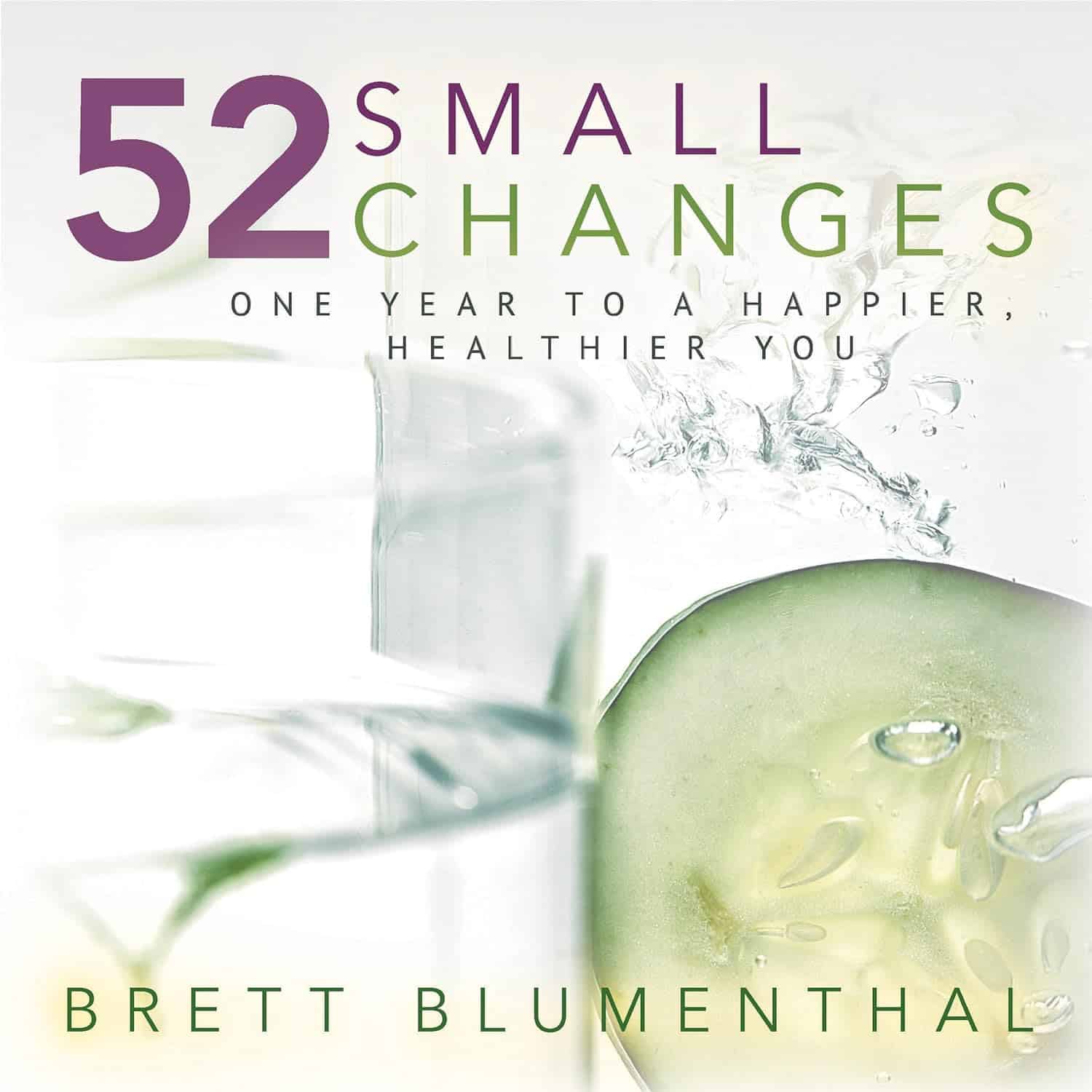
52 Small Changes – by Brett Blumenthal
10almonds is reader-supported. We may, at no cost to you, receive a portion of sales if you purchase a product through a link in this article.
We see a lot of books that exhort us to get a six-pack in a month, change our life in 7 days, learn Japanese in 24 hours. The reality is, things take time!
Brett Blumenthal is more realistic while being just as motivational:
The idea is simple… Make one small change per week for 52 weeks, and at the end of the year, you’ll be healthier and happier.
At 10almonds, we’re big fans of small changes that add up (or rather: compound!) to make big differences, so this one’s absolutely our style!
Best of all, she offers us not just “do this” advice, but also “and here’s the information and resources you’ll need to make this change work the best it can for you”
The advices range in topic from nutrition to exercise to sleep to mental wellness to interpersonal stuff and more. The biggest focus is on personal health, though, with small changes to exercise and nutrition making up the lion’s share of the changes.
Bottom line: this is a book you’ll want to grab once a week. Consider setting a reminder on your phone to check in with it each Sunday, for example!
Take the first step and order “52 Small Changes” from Amazon today!
Don’t Forget…
Did you arrive here from our newsletter? Don’t forget to return to the email to continue learning!
Recommended
Learn to Age Gracefully
Join the 98k+ American women taking control of their health & aging with our 100% free (and fun!) daily emails:
-
The Mediterranean Diet: What Is It Good For?
10almonds is reader-supported. We may, at no cost to you, receive a portion of sales if you purchase a product through a link in this article.
More to the point: what isn’t it good for?
- It’s been found to reduce all-cause mortality, which is about the best thing one can say of any diet.
- It’s especially good for heart health and against cancer.
- It’s particularly recommended for the prevention or management of diabetes.
- It’s also been found, societally, to reduce general healthcare costs—basically, people get sick less and so have fewer healthcare costs.
What brought it to the attention of the world’s scientific community?
Back in the 1950s, physiologist Ancel Keys wondered why poor people in Italian villages were healthier than wealthy New Yorkers. Upon undertaking studies, he narrowed it down to the Mediterranean diet—something he’d then take on as a public health cause for the rest of his career.
Keys himself lived to the ripe old age of 100, by the way.
When we say “Mediterranean Diet”, what image comes to mind?
We’re willing to bet that tomatoes feature (great source of lycopene, by the way), but what else?
- Salads, perhaps? Vegetables, olives? Olive oil, yea or nay?
- Bread? Pasta? Prosciutto, salami? Cheese?
- Pizza but only if it’s Romana style, not Chicago?
- Pan-seared liver, with some fava beans and a nice Chianti?
In reality, the diet is based on what was historically eaten specifically by Italian peasants. If the word “peasants” conjures an image of medieval paupers in smocks and cowls, and that’s not necessarily wrong, further back historically… but the relevant part here is that they were people who lived and worked in the countryside.
They didn’t have money for meat, which was expensive, nor the industrial setting for refined grain products to be affordable. They didn’t have big monocrops either, which meant no canola oil, for example… Olives produce much more easily extractable oil per plant, so olive oil was easier to get. Nor, of course, did they have the money (or infrastructure) for much in the way of imports.
So what foods are part of “the” Mediterranean Diet?
- Fruits. These would be fruits grown locally, but no need to sweat that, dietwise. It’s hard to go wrong with fruit.
- Tomatoes yes. So many tomatoes. (Knowledge is knowing tomato is a fruit. Wisdom is not putting it in a fruit salad)
- Non-starchy vegetables (e.g. eggplant yes, potatoes no)
- Greens (spinach, kale, lettuce, all those sorts of things)
- Beans and other legumes (whatever was grown nearby)
- Whole grain products in moderation (wholegrain bread, wholewheat pasta)
- Olives and olive oil. Special category, single largest source of fat in the Mediterranean diet, but don’t overdo it.
- Dairy products in moderation (usually hard cheeses, as these keep well)
- Fish, in moderation. Typically grilled, baked, steamed even. Not fried.
- Other meats as a rarer luxury in considerable moderation. There’s more than one reason prosciutto is so thinly sliced!
Want to super-power this already super diet?
Try: A Pesco-Mediterranean Diet With Intermittent Fasting: JACC Review Topic of the Week
Share This Post
-
Fully Present – by Dr. Susan Smalley and Diana Winston
10almonds is reader-supported. We may, at no cost to you, receive a portion of sales if you purchase a product through a link in this article.
“The Science and the Art of…” tends to be a bit of a fuzzy obfuscation, but in this case, it’s accurate, especially in this presentation. The authors are, indeed, a scientist and an artist—and both practitioners, meeting in the middle.
As such, we get the clinical insights of a researcher and professor of psychiatry, and the grounded-yet-spiritual insights of an erstwhile Buddhist nun.
While the book is pop psychology in essence, the format is much more that of a textbook than a self-help book. Will it be useful for helping yourself anyway, though? Yes, absolutely, if you apply the information contained within.
Don’t be fooled into thinking that a textbook format makes it dry, though—the writing is very compelling, and you’ll find yourself turning pages eagerly. There’s no time like the present, after all!
Bottom line: if you find the scientific evidence-base for the usefulness of mindfulness appealing, but find a lot of guides a little fluffy, this one is perfectly balanced—and very well written, too.
Click here to check out Fully Present, bring yourself into the moment, always!
Share This Post
-
When Age Is A Flexible Number
10almonds is reader-supported. We may, at no cost to you, receive a portion of sales if you purchase a product through a link in this article.
Aging, Counterclockwise!
In the late 1970s, Dr. Ellen Langer hypothesized that physical markers of aging could be affected by psychosomatic means.
Note: psychosomatic does not mean “it’s all in your head”.
Psychosomatic means “your body does what your brain tells it to do, for better or for worse”
She set about testing that, in what has been referred to since as…
The Counterclockwise Study
A small (n=16) sample of men in their late 70s and early 80s were recruited in what they were told was a study about reminiscing.
Back in the 1970s, it was still standard practice in the field of psychology to outright lie to participants (who in those days were called “subjects”), so this slight obfuscation was a much smaller ethical aberration than in some famous studies of the same era and earlier (cough cough Zimbardo cough Milgram cough).
Anyway, the participants were treated to a week in a 1950s-themed retreat, specifically 1959, a date twenty years prior to the experiment’s date in 1979. The environment was decorated and furnished authentically to the date, down to the food and the available magazines and TV/radio shows; period-typical clothing was also provided, and so forth.
- The control group were told to spend the time reminiscing about 1959
- The experimental group were told to pretend (and maintain the pretense, for the duration) that it really was 1959
The results? On many measures of aging, the experimental group participants became quantifiably younger:
❝The experimental group showed greater improvement in joint flexibility, finger length (their arthritis diminished and they were able to straighten their fingers more), and manual dexterity.
On intelligence tests, 63 percent of the experimental group improved their scores, compared with only 44 percent of the control group. There were also improvements in height, weight, gait, and posture.
Finally, we asked people unaware of the study’s purpose to compare photos taken of the participants at the end of the week with those submitted at the beginning of the study. These objective observers judged that all of the experimental participants looked noticeably younger at the end of the study.❞
Remember, this was after one week.
Her famous study was completed in 1979, and/but not published until eleven years later in 1990, with the innocuous title:
Higher stages of human development: Perspectives on adult growth
You can read about it much more accessibly, and in much more detail, in her book:
Counterclockwise: A Proven Way to Think Yourself Younger and Healthier – by Dr. Ellen Langer
We haven’t reviewed that particular book yet, so here’s Linda Graham’s review, that noted:
❝Langer cites other research that has made similar findings.
In one study, for instance, 650 people were surveyed about their attitudes on aging. Twenty years later, those with a positive attitude with regard to aging had lived seven years longer on average than those with a negative attitude to aging.
(By comparison, researchers estimate that we extend our lives by four years if we lower our blood pressure and reduce our cholesterol.)
In another study, participants read a list of negative words about aging; within 15 minutes, they were walking more slowly than they had before.❞
Read the review in full:
Aging in Reverse: A Review of Counterclockwise
The Counterclockwise study has been repeated since, and/but we are still waiting for the latest (exciting, much larger sample, 90 participants this time) study to be published. The research proposal describes the method in great detail, and you can read that with one click over on PubMed:
It was approved, and has now been completed (as of 2020), but the results have not been published yet; you can see the timeline of how that’s progressing over on ClinicalTrials.gov:
Clinical Trials | Ageing as a Mindset: A Counterclockwise Experiment to Rejuvenate Older Adults
Hopefully it’ll take less time than the eleven years it took for the original study, but in the meantime, there seems to be nothing to lose in doing a little “Citizen Science” for ourselves.
Maybe a week in a 20 years-ago themed resort (writer’s note: wow, that would only be 2004; that doesn’t feel right; it should surely be at least the 90s!) isn’t a viable option for you, but we’re willing to bet it’s possible to “microdose” on this method. Given that the original study lasted only a week, even just a themed date-night on a regular recurring basis seems like a great option to explore (if you’re not partnered then well, indulge yourself how best you see fit, in accord with the same premise; a date-night can be with yourself too!).
Just remember the most important take-away though:
Don’t accidentally put yourself in your own control group!
In other words, it’s critically important that for the duration of the exercise, you act and even think as though it is the appropriate date.
If you instead spend your time thinking “wow, I miss the [decade that does it for you]”, you will dodge the benefits, and potentially even make yourself feel (and thus, potentially, if the inverse hypothesis holds true, become) older.
This latter is not just our hypothesis by the way, there is an established potential for nocebo effect.
For example, the following study looked at how instructions given in clinical tests can be worded in a way that make people feel differently about their age, and impact the results of the mental and/or physical tests then administered:
❝Our results seem to suggest how manipulations by instructions appeared to be more largely used and capable of producing more clear performance variations on cognitive, memory, and physical tasks.
Age-related stereotypes showed potentially stronger effects when they are negative, implicit, and temporally closer to the test of performance. ❞
(and yes, that’s the same Dr. Francesco Pagnini whose name you saw atop the other study we cited above, with the 90 participants recreating the Counterclockwise study)
Want to know more about [the hard science of] psychosomatic health?
Check out Dr. Langer’s other book, which we reviewed recently:
The Mindful Body: Thinking Our Way to Chronic Health – by Dr. Ellen Langer
Enjoy!
Share This Post
Related Posts
-
Staring At The Sun – by Dr. Irvin Yalom
10almonds is reader-supported. We may, at no cost to you, receive a portion of sales if you purchase a product through a link in this article.
A quick note first: there are two editions of this book; the content is the same, but the cover is different. So if in your region it has a bright yellow cover and the subtitle is the excitable “Overcoming The Terror Of Death” rather than the more measured “Being At Peace With Your Own Mortality”, that is why; different regional publishers made different choices.
For most of us, dying is the last thing we want to do. We may fear it; we may ignore it; we may try to beat it—but it’s a constant existential threat whether we want it or not.
This book is about “death anxiety”, either direct (conscious fear of impending death) or sublimated (not necessarily realising what we’re avoiding thinking about it). In its broadest sense, the fear of death can be described as rational. But angst about it probably won’t help, so this book looks to help us overcome that.
The style of the book is largely anecdotal, in which the author uses examples from his therapeutic practice to illustrate ways in which the fear of death can manifest, and ways in which it can be managed healthily.
Subjective criticism: while this author developed existential therapy, many of the ideas in this book lean heavily on the psychodynamic approach derived from Freud, and this reviewer isn’t a fan of that. But nevertheless, many of the examples here are thought-provoking and useful, so it is not too strong a criticism.
Bottom line: there are many ways to manage one’s mortality, and this book brings attention to a range of possibilities.
Click here to check out Staring At The Sun, and manage your mortality!
Don’t Forget…
Did you arrive here from our newsletter? Don’t forget to return to the email to continue learning!
Learn to Age Gracefully
Join the 98k+ American women taking control of their health & aging with our 100% free (and fun!) daily emails:
-
Cottage Cheese vs Ricotta – Which is Healthier?
10almonds is reader-supported. We may, at no cost to you, receive a portion of sales if you purchase a product through a link in this article.
Our Verdict
When comparing cottage cheese to ricotta, we picked the ricotta.
Why?
Cottage cheese is a famous health food, mostly for being a low-fat, low-carb, source of protein. And yet, ricotta beats it in most respects.
Looking at the macros first, cottage cheese has more carbs, while ricotta has more protein and fat. The fat profile is pretty much the same, and in both cases it’s two thirds saturated fat, which isn’t good in either case, but cottage cheese has less overall fat which means less saturated fat in total even if the percentage is the same. Because the difference in carbs and protein is not large, while ricotta has considerably more fat, we’ll call this category a win for cottage cheese.
In terms of vitamins, cottage cheese has more of vitamins B1, B5, and B12, while ricotta has more of vitamins A, B2, B3, B9, D, E, and K, so this one’s a win for ricotta.
In the category of minerals, cottage cheese has slightly more copper, while ricotta has much more calcium, iron, magnesium, manganese, potassium, selenium, and zinc. In particular, 2.5x more calcium, and 5x more iron! An easy and clear win for ricotta here.
Taking everything into account: yes, cottage cheese has less fat (and thus, in total, less saturated fat, although the percentage is the same), but that doesn’t make up for ricotta winning in pretty much every other respect. Still, enjoy either or both (in moderation!) if you be so inclined.
Want to learn more?
You might like to read:
Take care!
Don’t Forget…
Did you arrive here from our newsletter? Don’t forget to return to the email to continue learning!
Learn to Age Gracefully
Join the 98k+ American women taking control of their health & aging with our 100% free (and fun!) daily emails:
-
Resistance Is Useful! (Especially As We Get Older)
10almonds is reader-supported. We may, at no cost to you, receive a portion of sales if you purchase a product through a link in this article.
Resistance Is Useful!
At 10almonds we talk a lot about the importance of regular moderate exercise (e.g. walking, gardening, housework, etc), and with good reason: getting in those minutes (at least 150 minutes per week, so, a little over 20 minutes per day, or 25 minutes per day with one day off) is the exericise most consistently linked to better general health outcomes and reduced mortality risk.
We also often come back to mobility, because at the end of the day, being able to reach for something from a kitchen cabinet without doing oneself an injury is generally more important in life than being able to leg-press a car.
Today though, we’re going to talk about resistance training.
What is resistance training?
It can be weight-lifting, or it can be bodyweight exercises. In those cases, what you’re resisting is gravity. It can also be exercises with resistance bands or machines. In all cases, it’s about building and/or maintaining strength.
Why does it matter?
Let’s say you’re not an athlete, soldier, or laborer, and the heaviest thing you have to pick up is a bag of groceries. Strength still matters, for two main reasons:
- Muscle strength correlates to bone strength. You can’t build (or maintain) strong muscles on weak bones, so if you take care of your muscles, then your body will keep your bones strong too.
- That’s assuming you have a good diet as well—but today’s not about that. If you’d like to know more about eating for bone health though, do check out this previous article about that!
- Muscle strength correlates to balance and stability. You can’t keep yourself from falling over if you are physically frail.
Both of those things matter, because falls and fractures often have terrible health outcomes (e.g., slower recovery and more complications) the older we get. So, we want to:
- Ideally, not fall in the first place
- If we do fall, have robust bones
See also: Effects of Resistance Exercise on Bone Health
How much should we do?
Let’s go to the Journal of Strength and Conditioning Research on this one:
❝There is strong evidence to support the benefits of resistance exercise for countering many age-related processes of sarcopenia, muscle weakness, mobility loss, chronic disease, disability, and even premature mortality.
In addition, this Position Statement provides specific evidence-based practice recommendations to aid in the implementation of resistance exercise programs for healthy older adults and those with special considerations.
While there are instances where low-intensity, low-volume programs are appropriate (i.e., beginning programs for individuals with frailty or CVDs), the greatest benefits are possible with progression to moderate to higher intensity programs.❞
~ Fragala et al
Read the statement in full:
There’s a lot of science there and it’s well worth reading if you have the time. It’s particularly good at delineating how much is not enough vs how much is too much, and the extent to which we should (or shouldn’t) train to exhaustion.
If you don’t fancy that, though, and/or just want to start with something accessible and work your way up, the below is a very good (and also evidence-based) start-up plan:
Healthline’s Exercise Plan For Seniors—For Strength, Balance, & Flexibility
(it has a weekly planner, step-by-step guides to the exercises, and very clear illustrative animations of each)
Don’t Forget…
Did you arrive here from our newsletter? Don’t forget to return to the email to continue learning!
Learn to Age Gracefully
Join the 98k+ American women taking control of their health & aging with our 100% free (and fun!) daily emails:
- Muscle strength correlates to bone strength. You can’t build (or maintain) strong muscles on weak bones, so if you take care of your muscles, then your body will keep your bones strong too.

